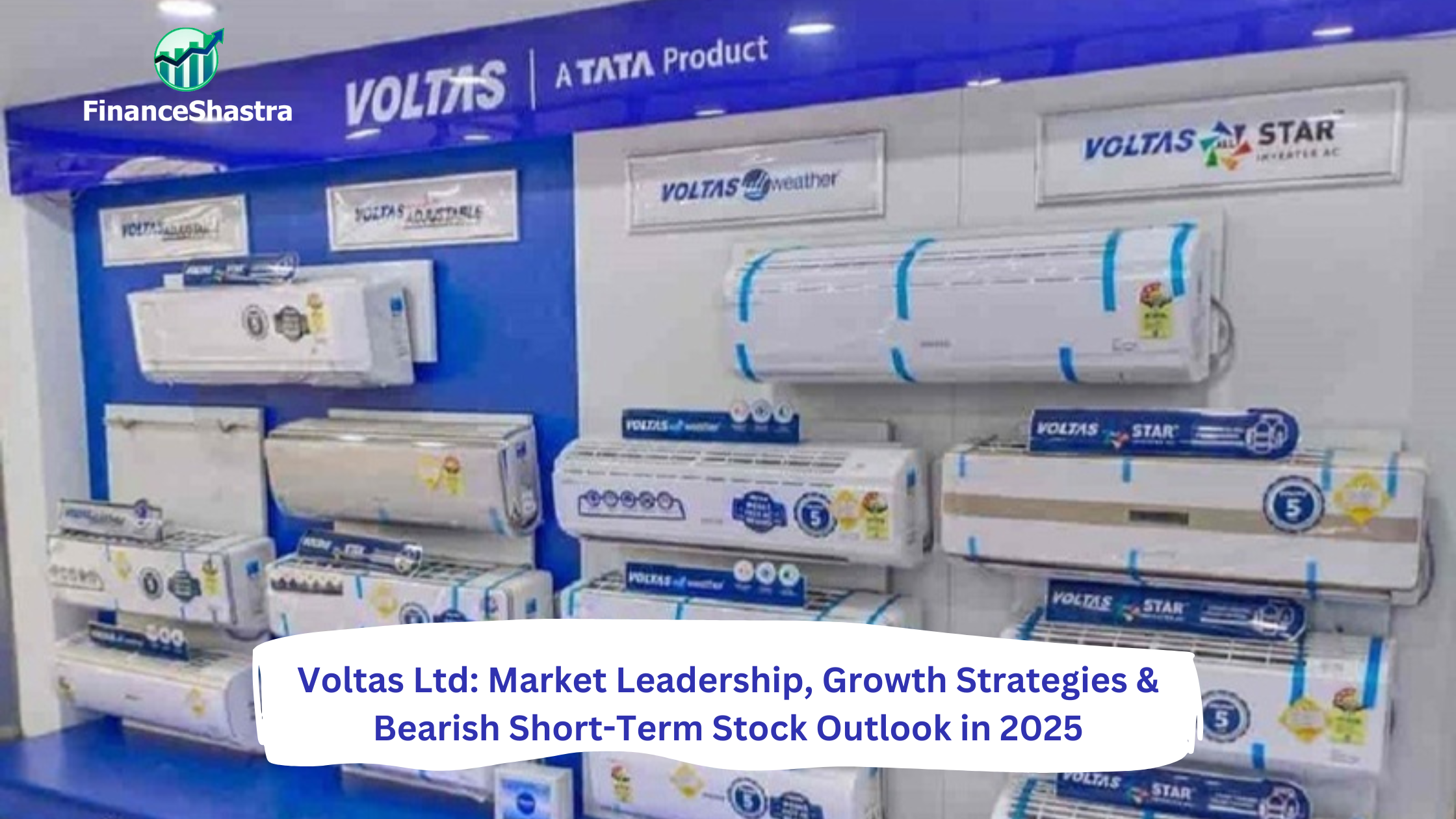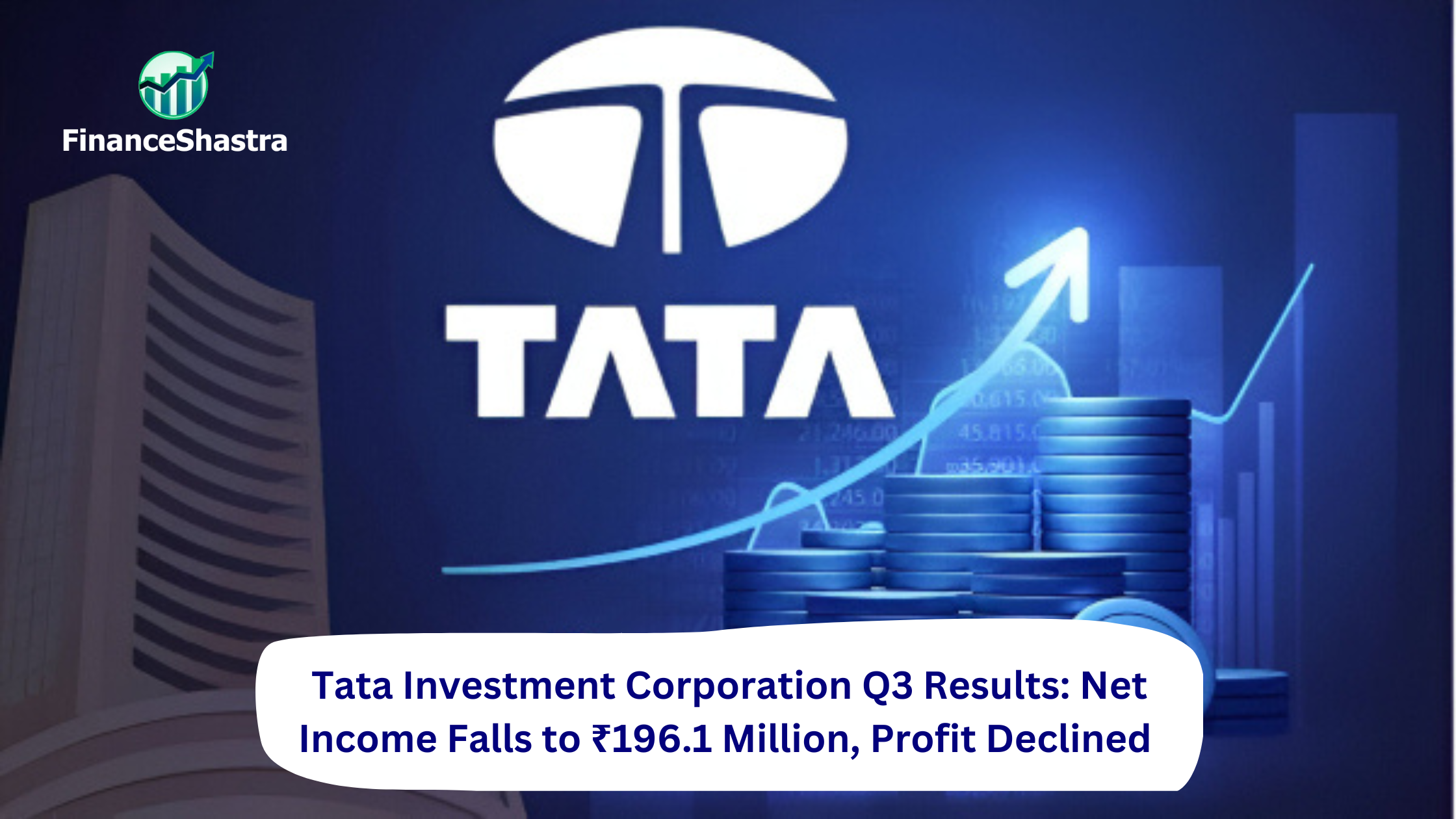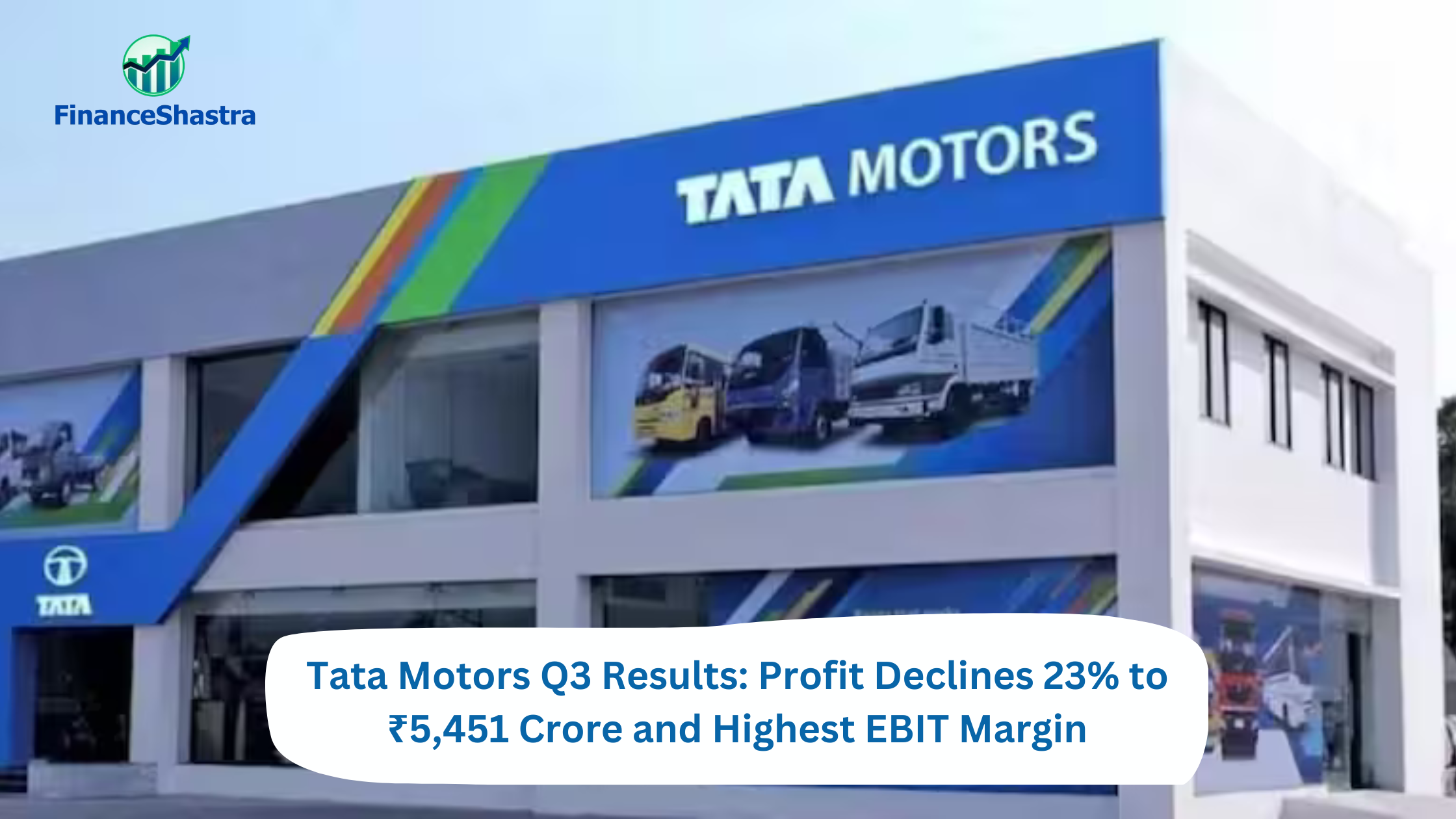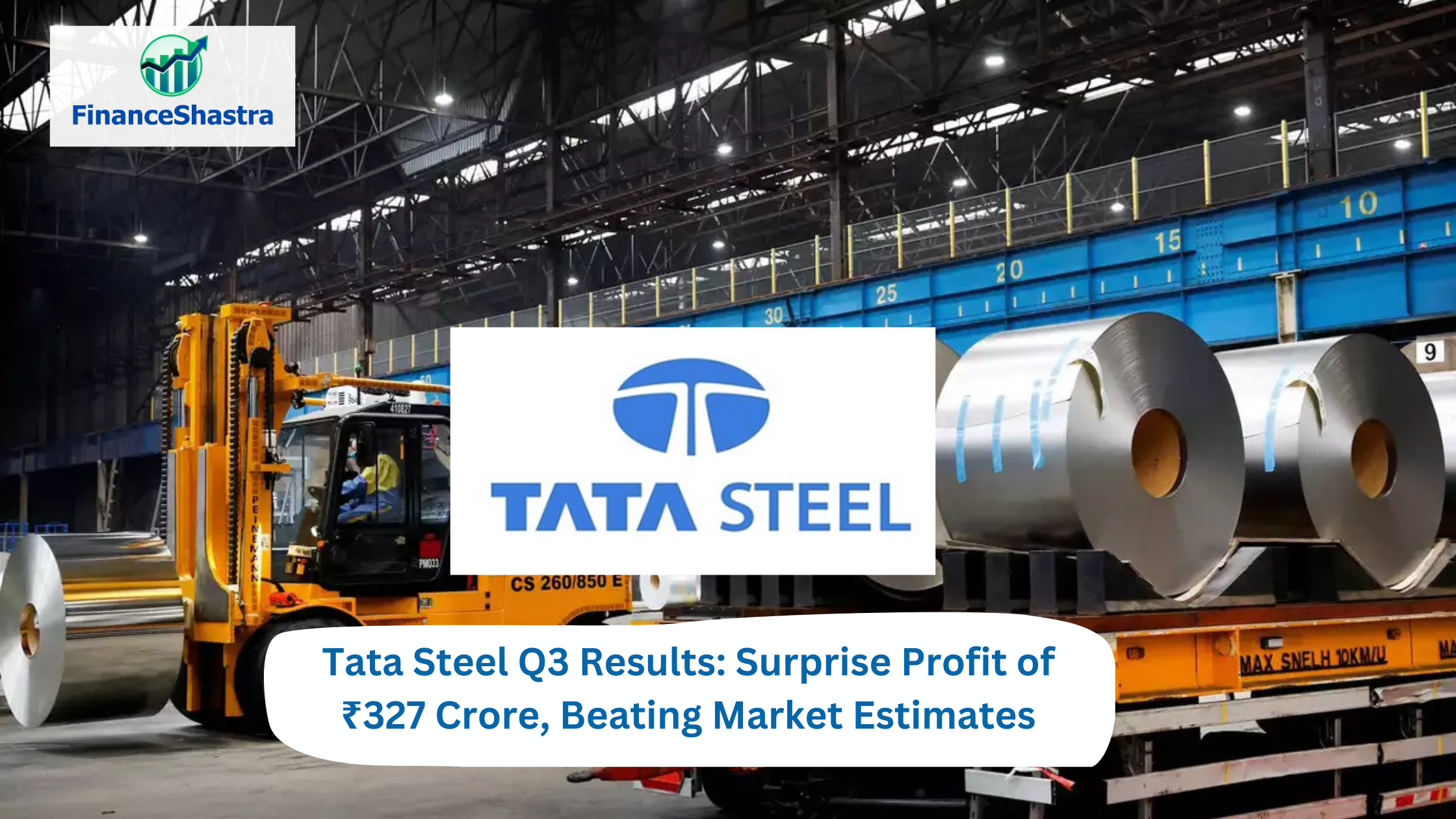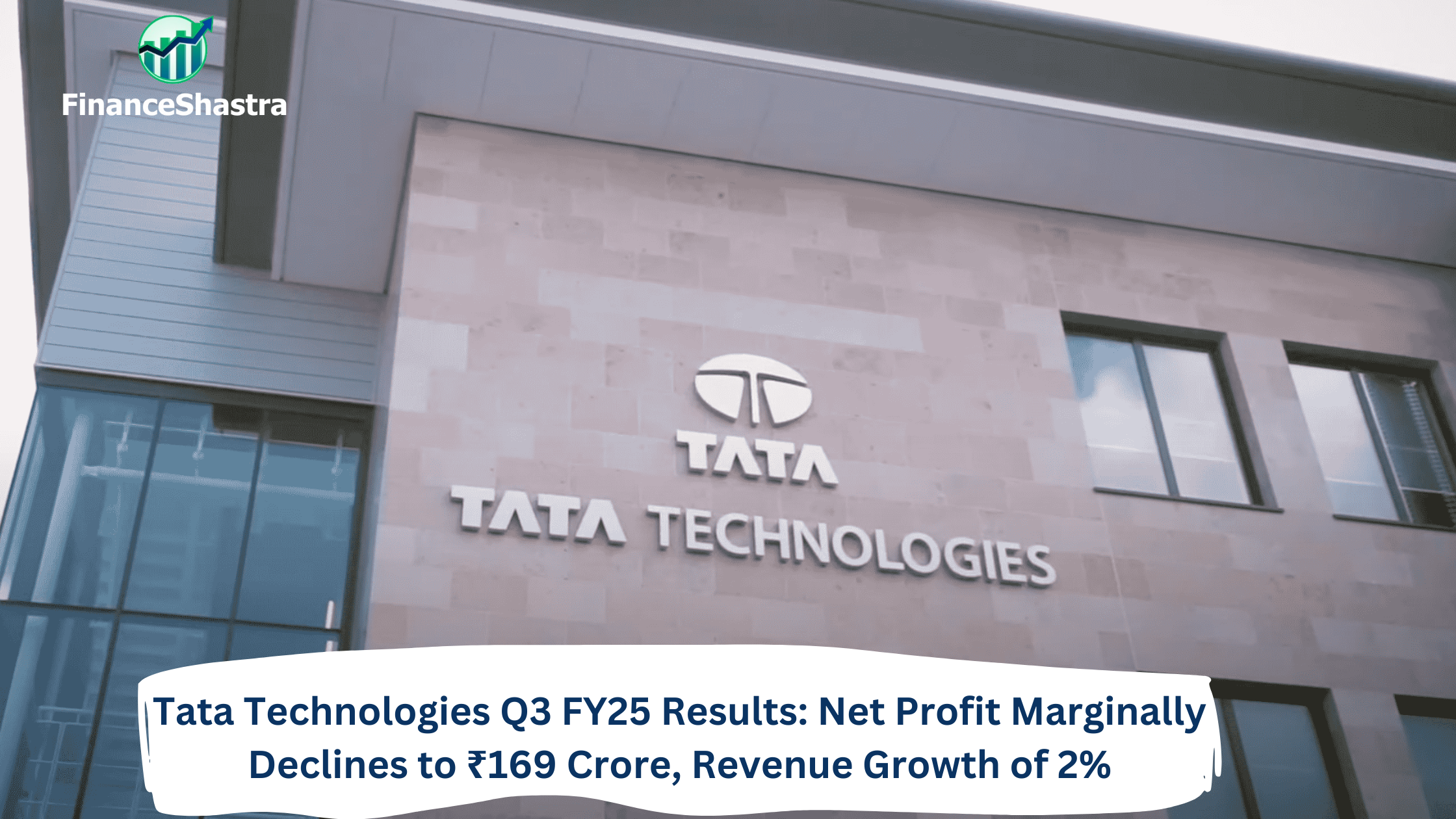Voltas Ltd: Market Leadership, Growth Strategies & Bearish Short-Term Stock Outlook in 2025
Business and Industry Overview:
Voltas Ltd is a big Indian company that makes and sells home appliances like air conditioners, refrigerators, washing machines, dishwashers, air coolers, microwaves, air purifiers, and water dispensers. It is India’s largest air conditioning company and was started on 6 September 1954 as a partnership between Tata Sons and Volkart Brothers. The company is based in Mumbai and is led by Noel Tata as the chairman and Pradeep Bakshi as the CEO and Managing Director. Voltas has two main businesses. The Projects Business works on big projects like cooling systems for shopping malls, offices, airports, and hotels. The Products Business makes and sells air conditioners, refrigerators, washing machines, air coolers, and water dispensers. It also sells mining and textile machinery. Voltas was the first company in India to make air conditioners. It introduced DC Inverter Technology, which helps air conditioners save electricity. Voltas has completed many big projects around the world, including air conditioning for Burj Khalifa in Dubai, Ferrari World in Abu Dhabi, RMS Queen Mary 2, the Palace of the Sultanate of Oman, Bahrain City Centre Mall, Sidra Medical and Research Centre in Qatar, and the Mall of Emirates in Dubai. In 2017, Voltas joined with Arçelik, a Turkish company, to start Voltas Beko. This joint venture makes refrigerators, washing machines, dishwashers, and other kitchen appliances for the Indian market. Voltas also works with Elgi Equipments to make compressors. The company sells its products in India and also in the Middle East, Southeast Asia, and Africa. Voltas is listed on the NSE and BSE under the symbol VOLTAS and competes with brands like Blue Star, Daikin, LG, and Samsung. The company is well known for its cooling solutions, energy-saving products, and strong service network. It is one of the most trusted brands in India and has a strong presence in the global market.
India’s consumer electronics industry is growing fast. More people are buying modern appliances because incomes are rising, cities are growing, and technology is improving. The air conditioner market in India will reach ₹50,000 crore (US$ 5.6 billion) by 2029. This is because of hot weather, better living conditions, and affordable prices. The smartphone market is also expanding. It is expected to reach US$ 90 billion by 2032 as people buy better phones. The wireless headset market is growing too. It will reach US$ 77 million by 2027, with a yearly growth rate of 4.7%. India’s wearable market is also increasing. In 2023, companies sold 134 million wearable devices, which is 34% more than in 2022. Electronics exports are rising. From April to December in FY25, exports reached ₹2,25,869 crore (US$ 26.1 billion). The government wants the electronics industry to be worth US$ 300 billion by FY26. It also aims to export US$ 120 billion worth of electronic products. The Indian government is supporting this growth. It allows 100% Foreign Direct Investment (FDI) in electronics manufacturing. The Production Linked Incentive (PLI) scheme helps companies that make air conditioners and LED lights. This scheme has attracted US$ 814 million (₹6,766 crore) in investments. Global brands like Samsung are building more factories in India. They are also using smart technology in production. Investments in electronics are increasing. From April 2000 to September 2024, foreign investors put ₹39,416 crore (US$ 5.67 billion) into electronic manufacturing. The electronics industry now contributes 0.6% to India’s GDP. It is growing at 11% per year and will reach ₹3 lakh crore (US$ 34.5 billion) by 2029.
Voltas is a well-known brand in India, especially for air conditioners. It is part of the Tata Group, which is trusted by many. Voltas makes affordable and good-quality air conditioners, air coolers, and other appliances. It offers products at different prices, so people from all income groups can buy them. Voltas’ air conditioners are known for being energy-efficient. They use technology like DC Inverter, which helps save electricity while keeping the room cool. This is one of the reasons why many people choose Voltas. The company also focuses on customer service. It has many service centers and dealers across India, making it easy for customers to get repairs or maintenance for their products. Voltas is also successful in the commercial sector. It provides cooling systems for big places like airports, malls, and metro stations. This shows the company can handle large projects and is trusted by businesses. Voltas competes with brands like LG, Samsung, Daikin, and Blue Star. While these brands offer similar products, Voltas stands out by being more affordable and offering better customer service. It also has the advantage of being part of the Tata Group, which adds trust to the brand. However, it still faces strong competition from global brands like Daikin and Mitsubishi, which offer premium products. To stay competitive, Voltas keeps adding new features and expanding its product range. For example, Voltas has teamed up with Beko to sell home appliances like refrigerators, washing machines, and dishwashers in India.
In short, Voltas stays competitive by offering reliable, affordable, and energy-saving products. It focuses on good customer service and uses its strong connection with the Tata Group to maintain its position in the market.
Latest Stock News:
On March 21, 2025, Voltas’ stock dropped by 2.5%. This happened because Prabhudas Lilladher, a company that tracks stocks, changed its advice on Voltas from “buy” to “accumulate.” However, they still think the stock can go up and set a target price of Rs 1,593, which is 11% higher than the current price. Earlier, on March 17, 2025, Voltas’ stock went up by 3.17%. This was better than the market, which only went up by 1.25%. The stock reached Rs 1,445 during the day, showing good performance. Voltas’ stock is above its 5-day and 20-day averages, but below its 50-day, 100-day, and 200-day averages. This means the stock has had some ups and downs in the short and long term.
In the last quarter, Voltas made a profit of Rs 132 crore. This is much better than last year, when it had a loss of Rs 30 crore. Voltas’ revenue also grew by 18% to Rs 3,105 crore. But, even with these good results, the stock dropped by 12.21% on the day the results came out. It ended the day at Rs 1,296 on the Bombay Stock Exchange. In the future, Voltas is expected to do well because people will likely buy more air conditioners in the summer. While the company might face some challenges with profits, it is working on expanding and cutting costs to keep growing.
Potentials:
Voltas is focused on growing its air conditioner business. They believe that as summers become hotter, more people will need air conditioners. They are expanding in India and other countries to meet this demand. Voltas wants to make products more efficiently. To do this, they are improving their factories and processes. This will help them lower costs and make more products. The company aims to be the top brand in air conditioning. They are also working to use better technology. This will make their products more energy-efficient and eco-friendly. Voltas plans to become a stronger brand worldwide. They are investing in new products and markets to grow even more.
Analyst Insights:
- Market capitalisation: ₹ 44,504 Cr.
- Current Price: ₹ 1,345
- 52-Week High/Low: ₹ 1,946 / 1,135
- P/E Ratio: 62.8
- Dividend Yield: 0.41%
- Return on Capital Employed (ROCE): 8.51%
- Return on Equity (ROE): 4.40%
Voltas Ltd. is a big name in air conditioning and refrigeration. It has a strong position in the market. It holds 21.2% of the room AC market and 36% of the window AC market. The company has a wide reach with over 30,000 touchpoints across India. It also has 330+ exclusive brand outlets and 5 experience zones. In a short time, Voltas sold 1 million units in 88 days. This shows strong customer demand. However, there are some concerns. The stock is expensive. The price-to-earnings (P/E) ratio is 62.8. This means the stock price is high compared to its earnings. The company’s return on equity (ROE) is low at 4.4%. This means it is not earning a lot of profit from its investments. The operating margin (OPM) is not stable, averaging around 5%. This could worry investors looking for stable returns. Voltas has been paying a good dividend of 70.8%, which is attractive to investors. But the stock is trading at 7.09 times its book value. This suggests that the stock might be overpriced. On the positive side, the company has improved its working capital. It reduced the number of days from 46.8 to 32.4. This means the company is managing its resources better. In conclusion, Voltas is a strong company in the market. But its stock is expensive. The profit growth has been inconsistent. The low ROE is also a concern. It is better to hold the stock for now and monitor its performance before deciding to buy or sell.

